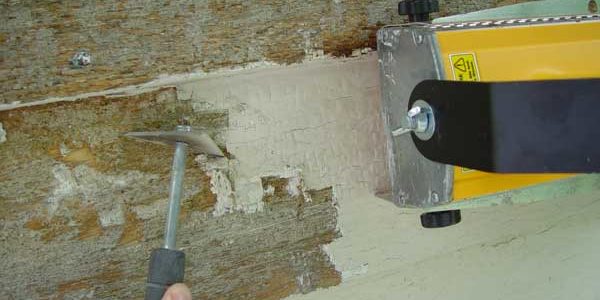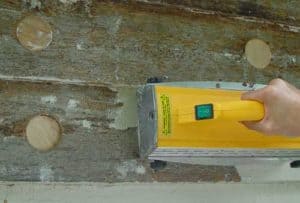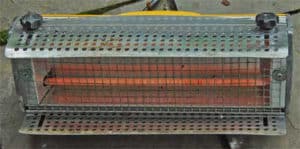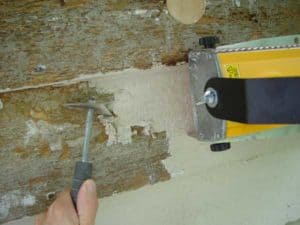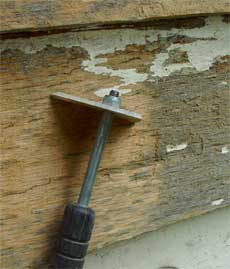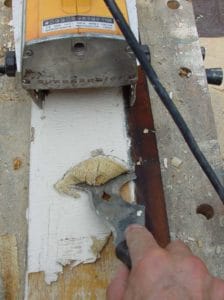Stripping Old Wood Siding – Step-By-Step
Here are the step-by-step procedures in striping original wood siding on an historic house as discussed in our Painting and Stripping Old Wood Siding—Overview page.
Wood siding from 1861 is amazingly hard. This is the case for our siding and is why it has held up. In fact, the hardness of old siding help to preserve many of my village's houses which went unpainted for years.
Since the layers of paint on our house had either alligatored or pealed off from moisture coming through the siding, we needed to remove all of the paint.
After researching stripping techniques, we narrowed our options down to the SpeedHeater (see below) that uses infrared heating elements to soften paint which can then be scraped. This device heats a large area, doesn't get hot enough to vaporize the lead in lead paint or to burn wood, and is easy to use. We found it faster to actually remove the siding, when possible, before stripping the boards. In less time, all of the paint can be removed, all holes filled, the boards completely sanded, and both sides of the wood painted with wood preservative.
UPDATE: I have also learned about PaintShaver Pro that
is much faster and gets good recommendations. These tools are expensive, but if your painting an entire house, the cost of these tools is offset by the time they save. More at American International Tools.
If your siding nails are old and pry out easily, simply remove the siding and then strip the paint and prepare the boards for painting. You get a better job and can use house wrap and fix any insulation issues.
Important tips:
- Scraper blades must be sharp. The triangle pull scraper sold by the SpeedHeater company is worth the cost (Photo C). You will also need a sharpening stone to keep the blades sharp or buy new blades. We didn't do this at first and wasted a lot of energy in scraping with dull blades. We purchased the DuoSharp® Diamond sharpening stone
 . It works better than a regular whetstone and, again, was worth the extra cost.
. It works better than a regular whetstone and, again, was worth the extra cost. - For a drop cloth, use garden weed blocker fabric. This allows rain to flow through and the scrapings to remain where they fall. We first used plastic sheets which puddled after a rain and allowed the scrapings to wash off.
- Lead paint. In the Silent Paint Remover process, paint is removed as pieces and toxic lead dust is not created. If your paint chips do contain lead paint, most areas allow homeowners doing their own scraping to dispose of them in their regular trash.
Strip the old paint using an infrared paint stripper for large areas and a heat gun for hard to reach areas.
Remove any caulk between the boards of the siding. With wood siding do not caulk between the boards as this will trap in moisture that can cause the paint to peel.
In the photo on the right, you will see wooden plugs use to cover the holes drilled to blow in insulation. We reset all of the plugs by removing them, applying polyurethane glue (Gorilla Glue), and resetting them in the siding so that they were flush. Even better is to use a wood epoxy like Abatron LiquidWood. What doesn't work is to use a regualr wood glue or wood filler.
Scraping. We used a good carbide blade triangular scraper we purchased from the firm selling the infrared paint remover we use.
Nail any loose boards. We removed the old cut nails from 1860 because they no longer gripped well. We replaced them with stainless steel siding nails.
Sand. We used a palm sander with course 40 grit cloth backed sand paper.
When removing lead-based paint, always wear a dust mask, preferable a N100.
Product information
American International Tools Paint Shaver![]()
|
Help support this site
|
